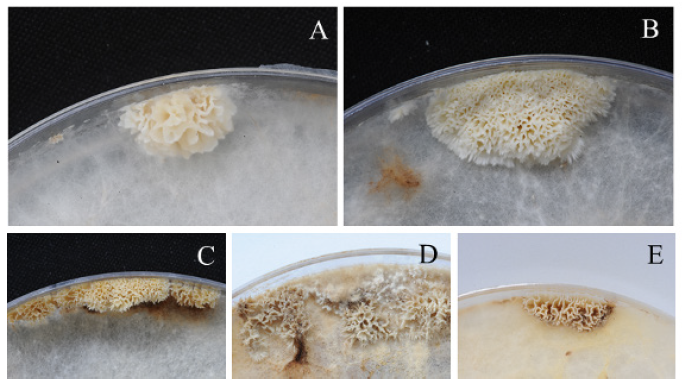Abstract
Wolfiporia cocos is an important medicinal fungus that has been used in regions of Northeast Asia including Korea, Japan, and China. W. cocos is classified in Korea into two types (red bokryeong and white bokryeong) based on the internal colors (yellow orange-pale pink and white) of the sclerotium. Generally, the W. cocos type cultivated on farms produces white sclerotium. In this study, we endeavored to select strains that form sclerotium in sawdust medium using 2-way cross-breeding among two cultivated strains and three wild strains. Monospores were isolated from the fruiting bodies of cultivated and wild strains on potato dextrose agar. Thirty-nine strains of 338 hybrid strains isolated formed sclerotia with white or yellow colors upon culture for 3 months in Pinus densiflora sawdust medium. Selection for sclerotium forming strains using sawdust culture follows a very simple and easy procedure that is presented for the first time in this paper. We plan to test selected strains in the field to aid in developing new varieties for the future.
Figures & Tables

Fig. 1. Fruiting bodies of Wolfiporia cocos formed on potato dextrose agar plates after culturing for two months. A, NIFoS 3050 (cultivation strain); B, NIFoS 5233 (cultivation strain); C, NIFoS 3127 (wild strain); D, NIFoS 3128 (wild strain); E, NIFoS 5226 (wild strain).


